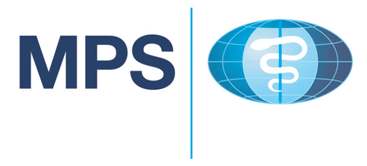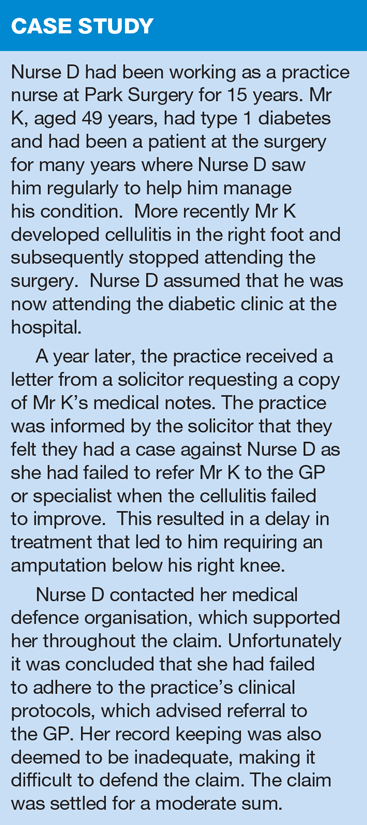How to avoid clinical negligence claims
Diane Baylis
Diane Baylis
Clinical Risk Manager at the Medical Protection Society (MPS)
The threat of receiving a clinical negligence claim has become an increasing issue for many nurses. Diane Baylis, Clinical Risk Manager for the Medical Protection Society (MPS) explores this growing concern and gives you tips on how to avoid a claim
The vast majority of patients are treated safely and without complication.However, mistakes do happen – systems fail and patients may suffer harm. When a patient believes that an adverse outcome could have been prevented they may seek compensation, and as Practice Nurse reported last month, claims against practice nurses are on the increase.
It is important that you are aware of the key issues and have strategies in place to ensure patient safety and prevent litigation, where possible.
WARNING SIGNS OF A LOOMING CLAIM
A clinical negligence claim may arise many years after an event. You may be aware that something had gone wrong or you may not expect the claim at all. The first indication that a claim is imminent is often a request for patient records from a solicitor. Accusations of negligence can arise from almost any action or failure to act that results in an injury to a patient, or a failure to adhere to a standard of clinical practice.
Experience shows that the risk of a complaint or claim is often more to do with predisposing factors such as poor communication skills, managing patient expectations and being insensitive to the patient’s needs.1-3
WHAT SHOULD YOU DO IF A CLAIM ARISES
The process of responding to a clinical negligence claim can be a protracted and distressing experience. Contact your medical defence organisation (MDO) as soon as possible: if you find yourself the subject of a claim the earlier your MDO is in receipt of the facts, the sooner they can start looking into how to best provide assistance. Don’t ignore it, it won’t go away!
It’s important to be able to discuss the claim with your colleagues; you are going to need extra support at this time. Many MDOs can provide a counselling service to help you through this stressful and anxious time.
Contrary to popular belief, obtaining compensation is the primary goal in only a small percentage of litigation claims. When something goes wrong, most patients want an apology, an explanation of what has gone wrong and reassurance as to how you are going to prevent this from happening again.
However, claims against nurses in general practice are on the increase and it is important that you consider incorporating the top tips into your current practice.
REFERENCES
1. Studdert D et al. Claims, errors, and compensation payments in medical malpractice litigation, NEJM 2006;354(19):2024–2033
2. Moore PJ, Adler NE et al. Medical Malpractice: The effect of Doctor-Patient relations on medical perceptions and malpractice intentions, West J Med 2000;173(4):244-250
3. Fullam F et al. The Use of Patient Satisfaction Surveys and Alternative Coding Procedures to Predict Malpractice Risk, Med Care 2009;47(5):553–559
4. National Institute for Health and Care Excellence (NICE) http://www.nice.org.uk/about/what-we-do/our-programmes/nice-guidance/nice-guidelines/nice-clinical-guidelines
5. The Scottish Intercollegiate Guidelines Network (SIGN) http://www.sign.ac.uk/index.html
6. Nursing and Midwifery Council. Professional indemnity arrangements http://www.nmc-uk.org/Registration/Professional-indemnity-arrangements/
7. The Code: Standards of conduct, performance and ethics for nurses and midwives http://www.nmc-uk.org/Publications/Standards/The-code/Introduction/
Related articles
View all Articles


